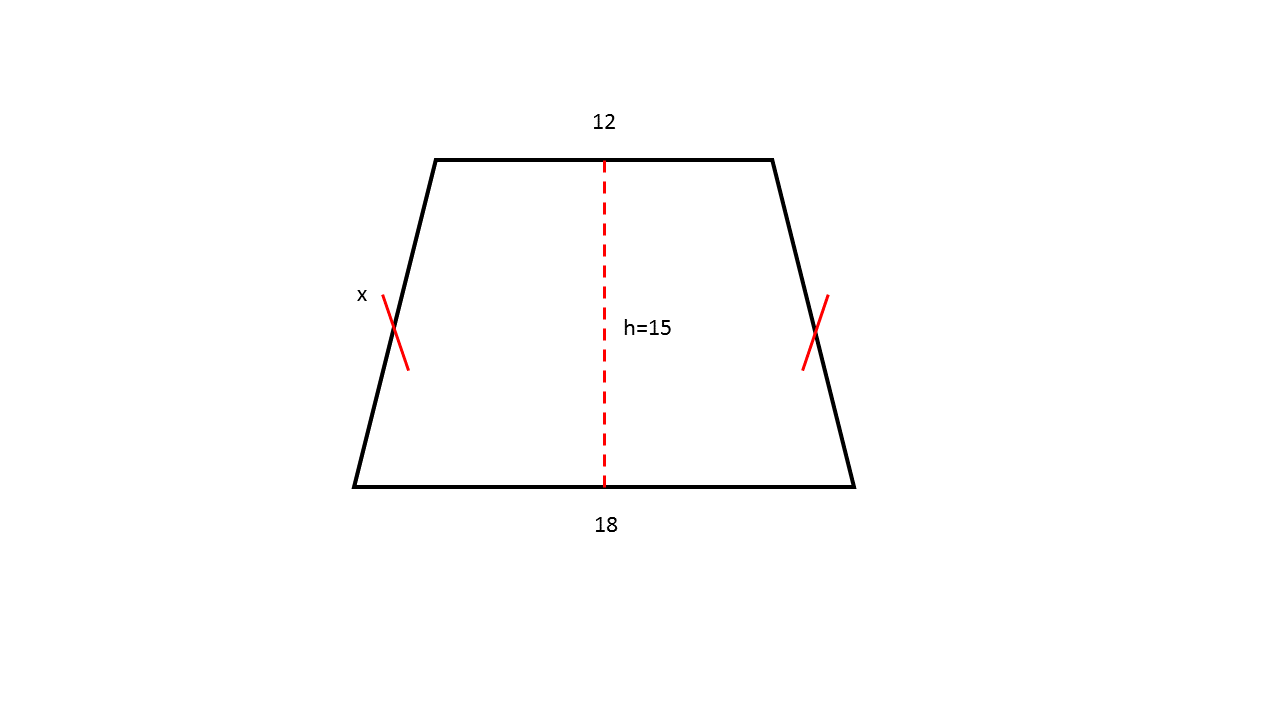How to find the length of the side of a trapezoid
Help Questions
Math › How to find the length of the side of a trapezoid
An isosceles trapezoid has base measurements of 


Explanation
To solve this problem, first note that an isosceles trapezoid has two parallel bases that are nonequivalent in length. Additionally, an isosceles trapezoid must have two nonparallel sides that have equivalent lengths. Since this problem provides the length for both of the bases as well as the total perimeter, the missing sides can be found using the following formula: Perimeter= Base one 


Thus, the solution is:
Check the solution by plugging in the answer:
Find the value of 


Explanation
The formula to find the area of a trapezoid is

Substitute in the values for the area, a base, and the height. Then solve for 

The above figure depicts Trapezoid 



Explanation
The midsegment of a trapezoid has as its length half the sum of the lengths of the bases, which here are 

The correct choice is 
An isosceles trapezoid has base measurements of 


Explanation
In order to solve this problem, first note that an isosceles trapezoid has two parallel bases that are nonequivalent in length. Additionally, an isosceles trapezoid must have two nonparallel sides that have equivalent lengths.
This problem provides the lengths for each of the bases as well as the height of the isosceles trapezoid. In order to find the length for one of the two equivalent nonparallel legs of the trapezoid, first use the height of the trapezoid to form right triangles on the interior of the trapezoid that each have a base length of 

Note: the base length of 
Now, apply the formula 

Thus, the solution is:
Find the value of 


Explanation
The formula to find the area of a trapezoid is

Substitute in the values for the area, a base, and the height. Then solve for 

Figure NOT drawn to scale.
The above figure depicts Trapezoid 



Give the area of Trapezoid 

Explanation
The midsegment of a trapezoid has as its length half the sum of the lengths of the bases, which here are 

Therefore,
The area of Trapezoid 




Suppose the area of the trapezoid is 


Explanation
Write the formula for finding the area of a trapezoid.
Substitute the givens and solve for either base.

The isosceles trapezoid shown above has base measurements of 



Explanation
In this problem the lengths for each of the bases and the height of the isosceles trapezoid is provided in the question prompt. In order to find the length for one of the two equivalent nonparallel legs of the trapezoid (side 

The base of the interior triangles is equal to 

Now, apply the pythagorean theorem: 

Thus,
Find the value of 


Explanation
The formula to find the area of a trapezoid is

Substitute in the values for the area, a base, and the height. Then solve for 

In the above diagram, which depicts Trapezoid 


(a)
(b) 24
(b) is the greater quantity
(a) is the greater quantity
(a) and (b) are equal
It is impossible to determine which is greater from the information given
Explanation
To see that (b) is the greater quantity of the two, it suffices to construct the midsegment of the trapezoid - the segment which has as its endpoints the midpoints of legs 





The length of the midsegment is half the sum of the bases, so


























































































